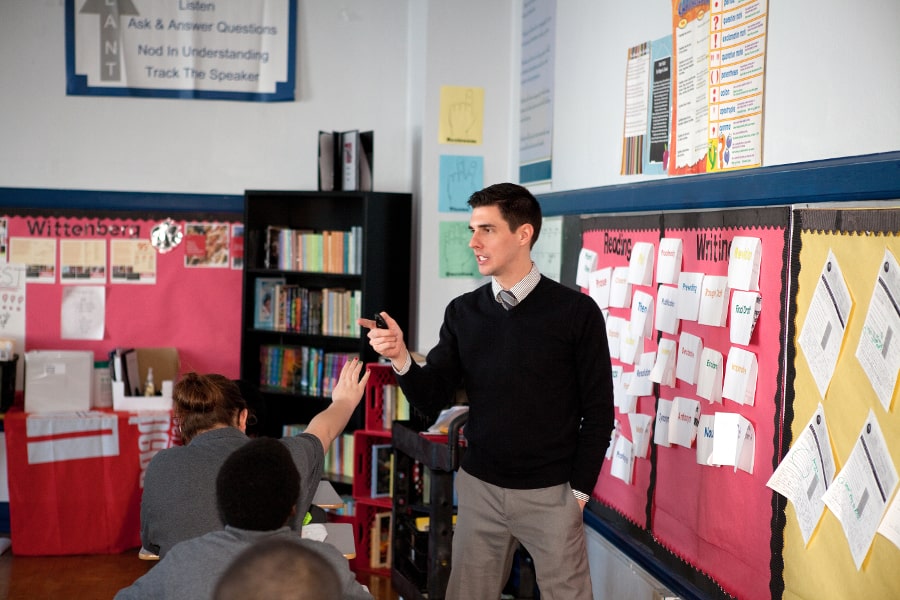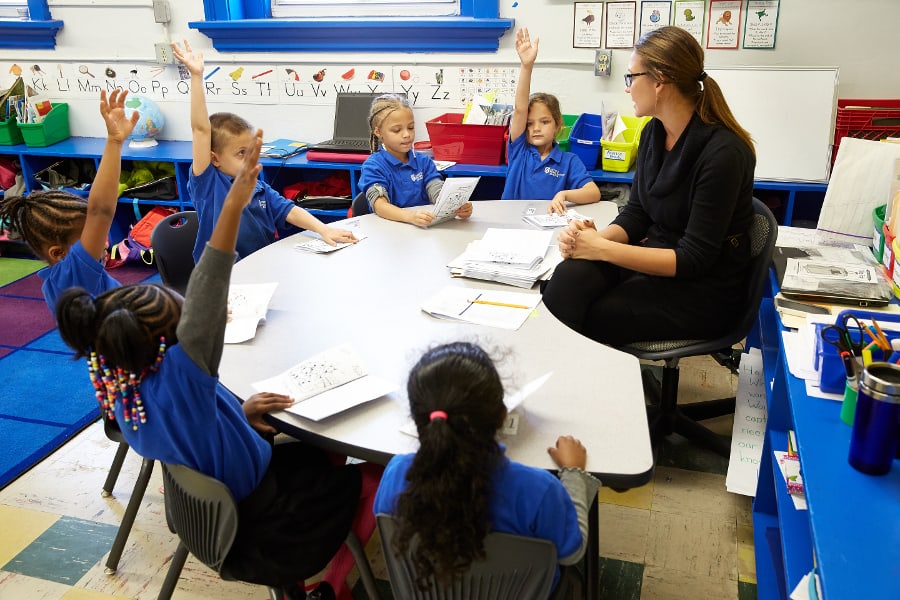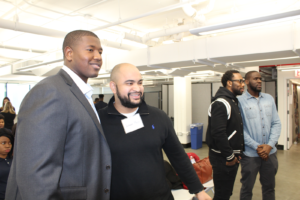Could an Extra Hour Be The Key to Teacher Retention?

By John A. Dues
One of the enduring challenges of primary and secondary education is how to balance the needs of students and teachers along with the reality of financial resources.
Educating kids requires talented, dedicated professionals who are willing to put in more than 40 hours per week. And yet few schools can pay staff and teachers the salaries that match their skill level and workload. This is the case in all schools, but particularly in Ohio’s public charter schools.
The Challenge
United Schools Network (USN) is a nonprofit coalition of high-performing charter schools serving grades kindergarten through second and sixth through eighth in Columbus, Ohio (eventually growing to two K-5 elementary schools and two 6-8 middle schools). We at USN are incredibly proud of the work we’ve done educating children, particularly in closing the achievement gap between children living in poverty and their more affluent peers.
But we know that we need to do a much better job of attracting and retaining talent. Our teachers are asked to put in long school days, make themselves available to students and parents in the evening–and for less money than they would make in most traditional school districts.
USN was recently named among just five schools–and the only charter school–on Columbus CEO’s Top Workplaces list, which is a testament to our positive work environment as well as the commitment of our staff. However, because of the systematic funding challenges that affect staffing levels and compensation, it is difficult to keep quality teachers beyond a few years.
Our employees are at the center of our ability to deliver on our mission, and we must prioritize them if we are to meet our lofty goals. From a moral perspective, they deserve a rewarding and manageable work life. From a practical perspective, if they are overwhelmed and underpaid, the best among them will find employment elsewhere. This is concerning as research indicates that teachers improve significantly across the first five years of their career. So if we constantly are replacing teachers, student achievement is likely to suffer.
The New Strategy
 With this in mind, we have begun the task of creating a long-term strategic plan with the goal of retaining talent at USN for at least five years with an emphasis on keeping our best people in the classroom. This plan will include improvements in compensation, professional development, school facilities and staff allocation, among other areas. In the coming school year, we’re also going to try something that initially may sound like heresy in the world of high-performing charter networks. We’re going to reorganize our school day for staff and students.
With this in mind, we have begun the task of creating a long-term strategic plan with the goal of retaining talent at USN for at least five years with an emphasis on keeping our best people in the classroom. This plan will include improvements in compensation, professional development, school facilities and staff allocation, among other areas. In the coming school year, we’re also going to try something that initially may sound like heresy in the world of high-performing charter networks. We’re going to reorganize our school day for staff and students.
Many education reformers, especially those in the charter school movement, have made the case that the traditional public district school day is too short. We at USN agree–but to a point. An efficient school day can be better for students than one that lasts longer. Plus, sleep-deprived kids and overtaxed teachers are not an ideal combination.
The Gift of Time
To date, school staffs have been required to be in the building from 7:30 a.m. to 4:15 p.m. on a typical school day. Staff meetings occur after dismissal, typically from 4:15 to 5:30 p.m. once every week or two. A number of other after-school meetings often create additional time-management demands.
Starting in the 2016-2017 school year, we’re going to try something different. Staff will still arrive at 7:30, but the students’ schedules will be pushed back by an hour. This means most, if not all, of those after-school meetings can take place before school begins.
In addition, this hour before classes begin will be used for professional development and collaborative planning. Our team thrives because it is committed to continuous improvement, and if we are serious about that, we must allot time for this professional learning. Scheduling this time at the beginning of the day allows teachers to immediately implement what they have learned by taking it directly into the classroom to benefit our students.
The Benefits
It’s not difficult to imagine how this will benefit our hardworking teachers. When we surveyed our staff last year, less than 15% described their workload as “just right.” Thirty-eight percent said their days were “long but doable;” almost half chose the description “long and unsustainable.” All school staff needs ample time to prepare, address challenges and meet with each other. In order to attract and retain talented teachers and school leaders, this time must be built into each day–not added onto the end of it.
 We are also making this change with students and families in mind. Eighty-eight percent of our families we surveyed last year said they were in favor of a later start to the day for student safety and health reasons. In the fall and winter, many students are waiting at bus stops in the dark and cold. In addition, many students are not able to get the sleep they need because they are either riding the bus or at school for 10 to 12 hours per day, in addition to completing homework.
We are also making this change with students and families in mind. Eighty-eight percent of our families we surveyed last year said they were in favor of a later start to the day for student safety and health reasons. In the fall and winter, many students are waiting at bus stops in the dark and cold. In addition, many students are not able to get the sleep they need because they are either riding the bus or at school for 10 to 12 hours per day, in addition to completing homework.
The vast majority of research on this topic demonstrates that middle-school aged students benefit from a later start. Experts have concluded it is more important for kids to be alert and rested while they’re in school than it is for them to spend more time there. It is difficult for sleepy children to learn, no matter how long they are in the classroom.
At any rate, USN has no intention of reducing the amount of academic instruction that any of our scholars receive. We have discovered inefficiencies that we can trim out of each day without having an impact on the time our students spend learning. And if they are learning from teachers who have a better work-life balance, then so much the better.
For more, see:
- Two Strategies for Empowering Teacher Leaders
- Getting Smart Podcast | Reclaiming the Classroom with America’s Teachers
- No Adult Left Behind: 3 Tips for Rethinking Teacher Roles
John A. Dues is the Chief Learning Officer for United Schools Network, which includes Columbus Collegiate Academy and United Preparatory Academy in Columbus, Ohio. Follow them on Twitter: @UniteToday_USN.
Stay in-the-know with all things EdTech and innovations in learning by signing up to receive the weekly Smart Update.







0 Comments
Leave a Comment
Your email address will not be published. All fields are required.